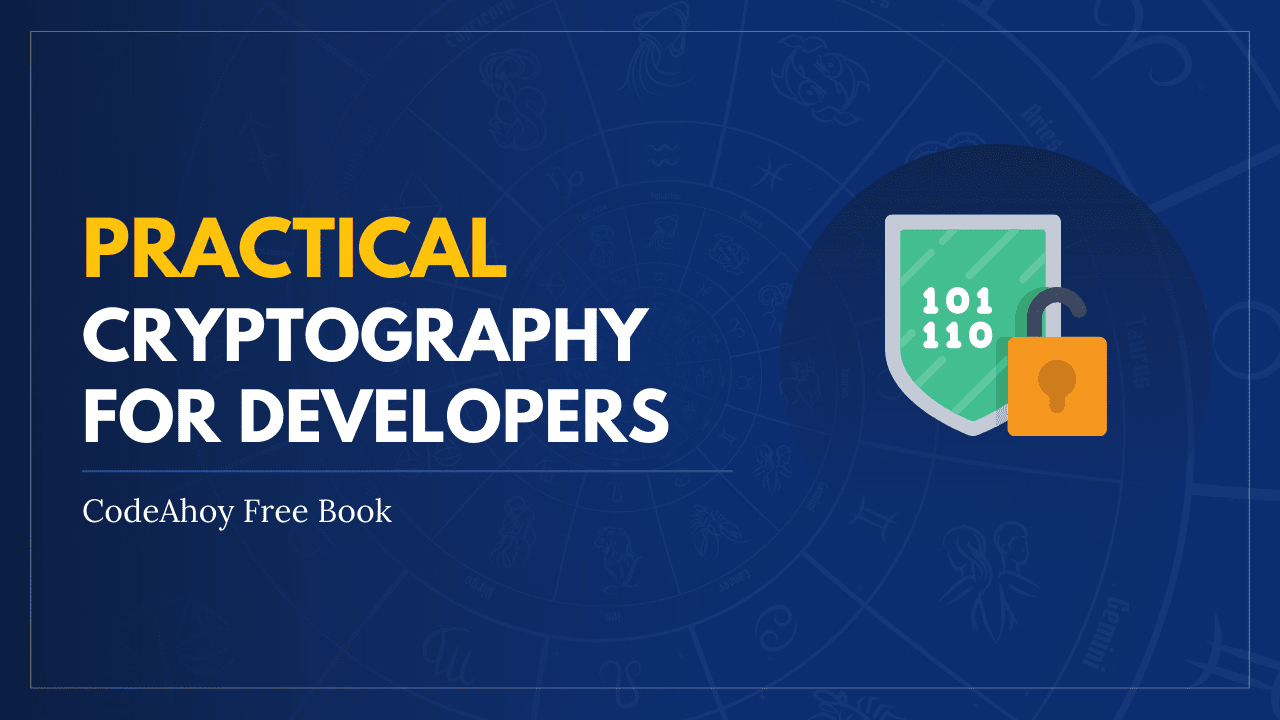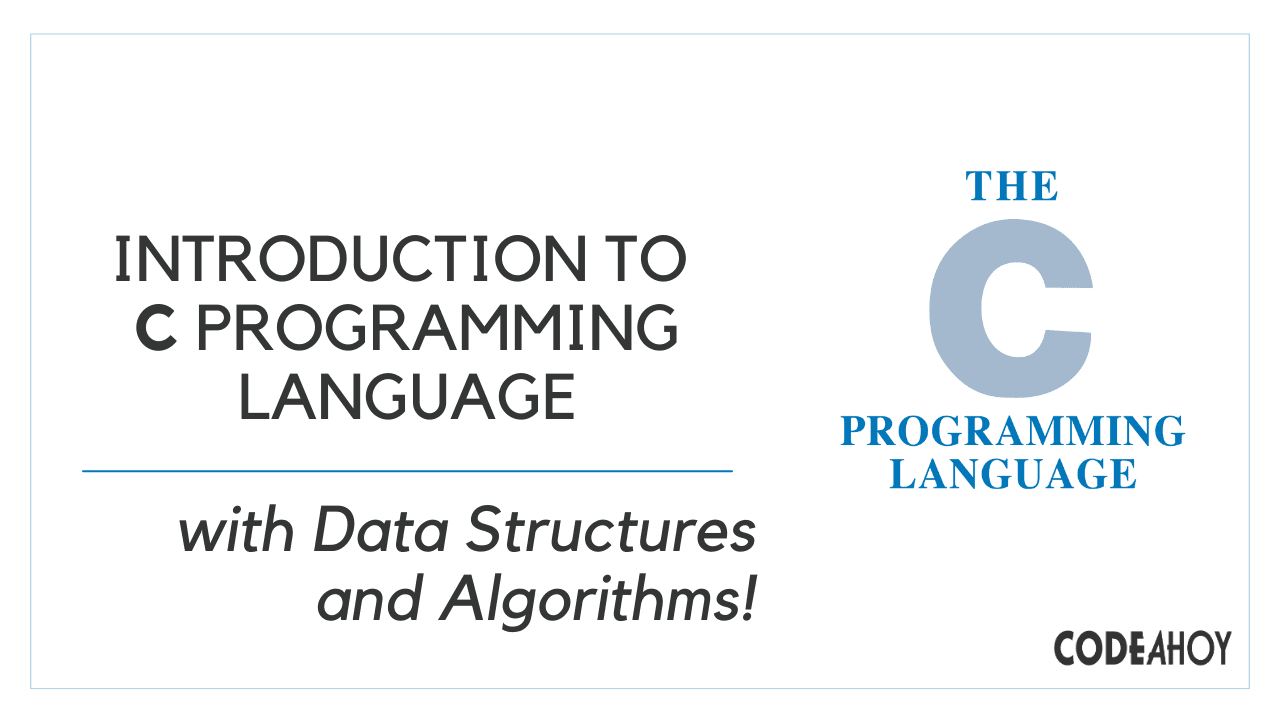Books / Crypto 101 / Chapter 2
Block ciphers
Few false ideas have more firmly gripped the minds of so many intelligent men than the one that, if they just tried, they could invent a cipher that no one could break. - David Kahn
In this chapter
What is block cipher?
A block cipher is an algorithm that encrypts blocks of a fixed length. The encryption function E transforms plaintext blocks P into ciphertext blocks C by using a secret key k:
\[C = E(k, P)\]Plaintext and ciphertext blocks are sequences of bits and always match
in size. The block cipher’s block size is a fixed size.
Keyspace is the set of all possible
keys.
Once we encrypt plaintext blocks into ciphertext blocks, they are later decrypted to recover original plaintext block. The original plaintext block P is produced using a decryption function $D$. It takes the ciphertext block C and the key k (the same one used to encrypt the block) as inputs.
\[P = D(k, C)\]Or, visually represented in blocks:
A block cipher is an example of a
symmetric-key encryption scheme, also
known as a secret-key encryption
scheme. The same secret key is used for both encryption and decryption.
Later in the book, we contrast this with
public-key encryption algorithms, which
have a distinct key for encryption and decryption.
A block cipher is a keyed permutation. It is a permutation because the block cipher maps each possible block to another block. It is also a keyed permutation because the key determines exactly which blocks map to which. It is important for the block cipher to be a permutation because the recipient must map blocks back to the original blocks.
We illustrate this by looking at a block cipher with an impractical, tiny 4-bit block size. \(2^4 = 16\) possible blocks. Since each of the blocks map to a hexadecimal digit, we represent the blocks by that digit. Figure 2 below illustrates blocks that the cipher operates on.
Figure 2 All of the 16 nodes operated on by the block cipher. Each node is designated by a hexadecimal digit.
Once we select a secret key, the block cipher uses it to determine the encryption of any given block. We illustrate that relationship with an arrow. The tail of the arrow has the block encrypted with E under key k and the arrowhead is mapped to the block.
Figure 3 An encryption permutation produced by the block cipher under a particular key k.
In Figure 3, note that the permutation is not just one big cycle. It contains a large cycle of 7 elements, and several smaller cycles of 4, 3 and 2 elements each. It is also perfectly possible that an element encrypts to itself. This is to be expected when selecting random permutations, which is approximately what a block cipher is doing; it doesn’t demonstrate a bug in the block cipher.
When you decrypt instead of encrypt, the block cipher computes the inverse permutation. In Figure 4, we get the same illustration. The difference between the illustrations is that all arrowheads point in the opposite direction.
Figure 4 The decryption permutation produced by the block cipher under the same key k: the inverse of the encryption permutation, that is: all the arrows have been reversed.
The key defines which blocks map to which blocks. A different key would lead to a different set of arrows, as you can see in Figure 5.
Figure 5 An encryption permutation produced by the block cipher under some other key.
In this illustration, you’ll even notice that there are two permutations of length 1: an element that maps to itself. This is again something to be expected when selecting random permutations.
Knowing a bunch of (input, output) pairs for a given key shouldn’t give you any information about any other (input, output) pairs under that key1. As long as we’re talking about a hypothetical perfect block cipher, there’s no easier way to decrypt a block other than to “brute-force” the key: i.e. just try every single one of them until you find the right one.
Our toy illustration block cipher only has 4 bit blocks, or \(2^4 = 16\) possibilities. Real, modern block ciphers have much larger block sizes, such as 128 bits, or \(2^{128}\) (slightly more than \(10^{38.5}\)) possible blocks. Mathematics tells us that there are n! (pronounced “n factorial”) different permutations of an n element set. It’s defined as the product of all of the numbers from 1 up to and including n:
\[n! = 1 \cdot 2 \cdot 3 \cdot \ldots \cdot (n - 1) \cdot n\]Factorials grow incredibly quickly. For example, \(5! = 120\), \(10! = 3628800\), and the rate continues to increase. The number of permutations of the set of blocks of a cipher with a 128 bit block size is \((2^{128})!\). Just \(2^{128}\) is large already (it takes 39 digits to write it down), so \((2^{128})!\) is a mind-bogglingly huge number, impossible to comprehend. Common key sizes are only in the range of 128 to 256 bits, so there are only between \(2^{128}\) and \(2^{256}\) permutations a cipher can perform. That’s just a tiny fraction of all possible permutations of the blocks, but that’s okay: that tiny fraction is still nowhere near small enough for an attacker to just try them all.
Of course, a block cipher should be as easy to compute as possible, as long as it doesn’t sacrifice any of the above properties.
AES
The most common block cipher in current use is AES.
Contrary to its predecessor DES (which we’ll look at in more detail in the next chapter), AES was selected through a public, peer-reviewed competition following an open call for proposals. This competition involved several rounds where all of the contestants were presented, subject to extensive cryptanalysis, and voted upon. The AES process was well-received among cryptographers, and similar processes are generally considered to be the preferred way to select cryptographic standards.
Prior to being chosen as the Advanced Encryption Standard, the algorithm was known as Rijndael, a name derived from the two last names of the Belgian cryptographers that designed it: Vincent Rijmen and Joan Daemen. The Rijndael algorithm defined a family of block ciphers, with block sizes and key sizes that could be any multiple of 32 bits between 128 bits and 256 bits. When Rijndael became AES through the FIPS standardization process, the parameters were restricted to a block size of 128 bits and keys sizes of 128, 192 and 256 bits.
There are no practical attacks known against AES. While there have been some developments in the last few years, most of them involve related-key attacks, some of them only on reduced-round versions of AES.2
A closer look at Rijndael
AES consists of several independent steps. At a high level, AES is a
substitution-permutation network.
Key schedule
AES requires separate keys for each round in the next steps. The key schedule is the process which AES uses to derive 128-bit keys for each round from one master key.
First, the key is separated into 4 byte columns. The key is rotated and then each byte is run through an S-box (substitution box) that maps it to something else. Each column is then XORed with a round constant. The last step is to XOR the result with the previous round key.
The other columns are then XORed with the previous round key to produce the remaining columns.
SubBytes
SubBytes is the step that applies the S-box (substitution box) in AES. The S-box itself substitutes a byte with another byte, and this S-box is applied to each byte in the AES state.
It works by taking the multiplicative inverse over the Galois field, and then applying an affine transformation so that there are no values x so that \(x ⊕ S(x) = 0\) or \(x ⊕ S(x)=\texttt{0xff}\). To rephrase: there are no values of x that the substitution box maps to x itself, or x with all bits flipped. This makes the cipher resistant to linear cryptanalysis, unlike the earlier DES algorithm, whose fifth S-box caused serious security problems.3
ShiftRows
After having applied the SubBytes step to the 16 bytes of the block, AES shifts the rows in the \(4 \times 4\) array:
MixColumns
MixColumns multiplies each column of the state with a fixed polynomial.
ShiftRows and MixColumns represent the diffusion properties of AES.
AddRoundKey
As the name implies, the AddRoundKey step adds the bytes from the round key produced by the key schedule to the state of the cipher.
DES and 3DES
The DES is one of the oldest block ciphers that saw widespread use. It was published as an official FIPS standard in 1977. It is no longer considered secure, mainly due to its tiny key size of 56 bits. (The DES algorithm actually takes a 64 bit key input, but the remaining 8 bits are only used for parity checking, and are discarded immediately.) It shouldn’t be used in new systems. On modern hardware, DES can be brute forced in less than a day.
In an effort to extend the life of the DES algorithm, in a way that allowed much of the spent hardware development effort to be reused, people came up with 3DES: a scheme where input is first encrypted, then decrypted, then encrypted again:
\[C = E_{DES}(k_1, D_{DES}(k_2, E_{DES}(k_3, p)))\]This scheme provides two improvements:
- By applying the algorithm three times, the cipher becomes harder to attack directly through cryptanalysis.
- By having the option of using many more total key bits, spread over the three keys, the set of all possible keys becomes much larger, making brute-forcing impractical.
The three keys could all be chosen independently (yielding 168 key bits), or \(k_3 = k_1\) (yielding 112 key bits), or \(k_1 = k_2 = k_3\), which, of course, is just plain old DES (with 56 key bits). In the last keying option, the middle decryption reverses the first encryption, so you really only get the effect of the last encryption. This is intended as a backwards compatibility mode for existing DES systems. If 3DES had been defined as \(E(k_1, E(k_2, E(k_3, p)))\), it would have been impossible to use 3DES implementations for systems that required compatibility with DES. This is particularly important for hardware implementations, where it is not always possible to provide a secondary, regular “single DES” interface next to the primary 3DES interface.
Some attacks on 3DES are known, reducing their effective security. While breaking 3DES with the first keying option is currently impractical, 3DES is a poor choice for any modern cryptosystem. The security margin is already small, and continues to shrink as cryptographic attacks improve and processing power grows.
Far better alternatives, such as AES, are available. Not only are they
more secure than 3DES, they are also generally much, much faster. On the
same hardware and in the same mode of operation (we’ll explain what that means in the next chapter),
AES-128 only takes 12.6 cycles per byte, while 3DES takes up to 134.5
cycles per byte. Despite
being worse from a security point of view, it is literally an order of
magnitude slower.
While more iterations of DES might increase the security margin, they aren’t used in practice. First of all, the process has never been standardized beyond three iterations. Also, the performance only becomes worse as you add more iterations. Finally, increasing the key bits has diminishing security returns, only increasing the security level of the resulting algorithm by a smaller amount as the number of key bits increases. While 3DES with keying option 1 has a key length of 168 bits, the effective security level is estimated at only 112 bits.
Even though 3DES is significantly worse in terms of performance and slightly worse in terms of security, 3DES is still the workhorse of the financial industry. With a plethora of standards already in existence and new ones continuing to be created, in such an extremely technologically conservative industry where Fortran and Cobol still reign supreme on massive mainframes, it will probably continue to be used for many years to come, unless there are some large cryptanalytic breakthroughs that threaten the security of 3DES.
Remaining problems
Even with block ciphers, there are still some unsolved problems.
For example, we can only send messages of a very limited length: the block length of the block cipher. Obviously, we’d like to be able to send much larger messages, or, ideally, streams of indeterminate size. We’ll address this problem with a stream-ciphers
Although we have reduced the key size drastically (from the total size of all data ever sent under a one-time pad scheme versus a few bytes for most block ciphers), we still need to address the issue of agreeing on those few key bytes, potentially over an insecure channel. We’ll address this problem in a later chapter with a key exchange protocol’
-
The attentive reader may have noticed that this breaks in the extremes: if you know all but one of the pairs, then you know the last one by exclusion. ↩
-
Symmetric algorithms usually rely on a round function to be repeated a number of times. Typically each invocation involves a “round key” derived from the main key. A reduced-round version is intentionally easier to attack. These attacks can give insight as to how resistant the full cipher is.
A related key attack involves making some predictions about how AES will behave under several different keys with some specific mathematical relation. These relations are fairly simple, such as XORing with an attacker-chosen constant. If an attacker is allowed to encrypt and decrypt a large number of blocks with these related keys, they can attempt to recover the original key with significantly less computation than would ordinarily be necessary to crack it.
While a theoretically ideal block cipher wouldn’t be vulnerable to a related key attack, these attacks aren’t considered practical concerns. In practice cryptographic keys are generated via a cryptographically secure pseudorandom number generator, or a similarly secure
key agreementscheme or key derivation scheme (we’ll see more about those later). Therefore, the odds of selecting two such related keys by accident is nonexistent. These attacks are interesting from an academic perspective: they can help provide insight in the workings of the cipher, guiding cryptographers in designing future ciphers and attacks against current ciphers. ↩ -
In its defense, linear attacks were not publicly known back when DES was designed. ↩













